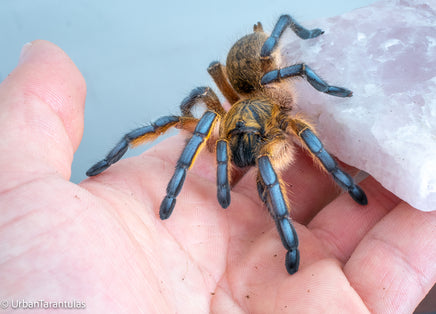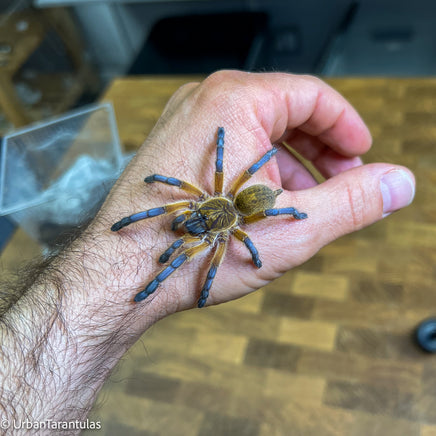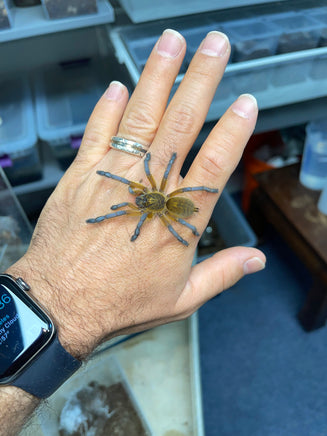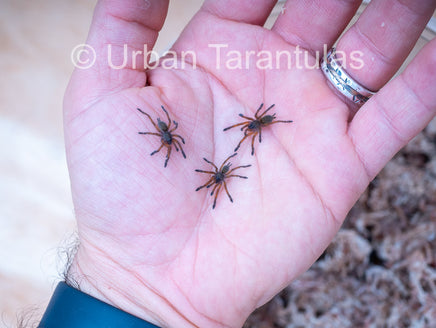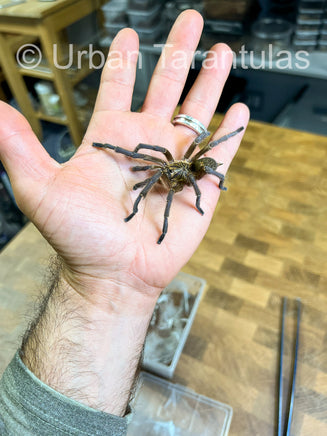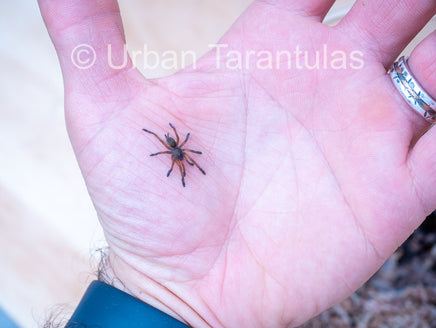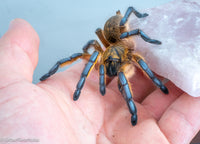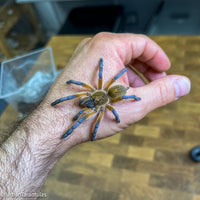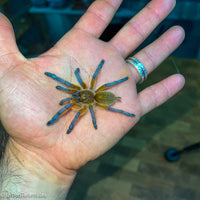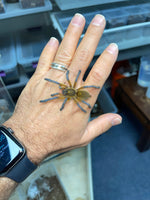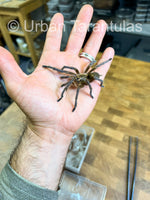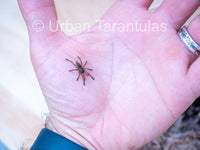Skip to product information
Harpactira pulchripes — Golden Blue Leg Baboon
This is hands-down one of the absolute best Old World tarantulas to start with. Alongside Monocentropus balfouri, Harpactira pulchripes is often considered the most approachable Old World species available. They’re shockingly chill for a baboon spider, grow fast, and are completely unreal in person — electric blue legs paired with a golden carapace. One of my favorite Old Worlds to keep and recommend.
